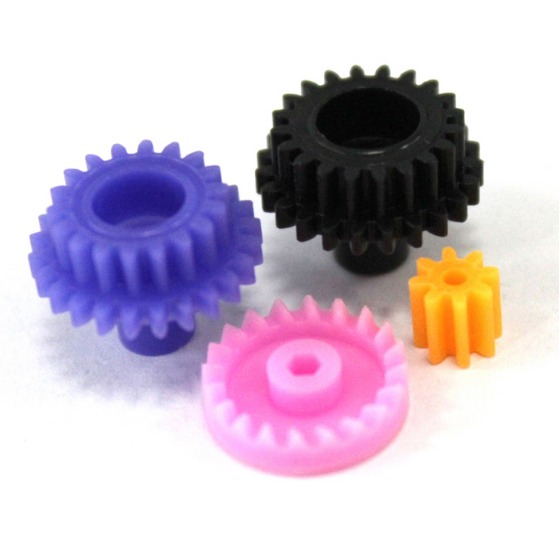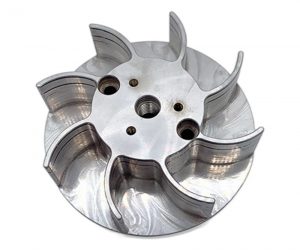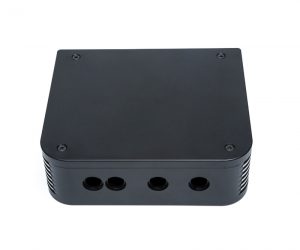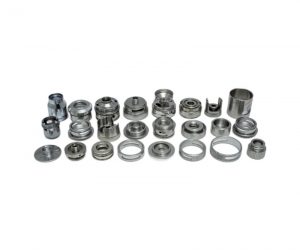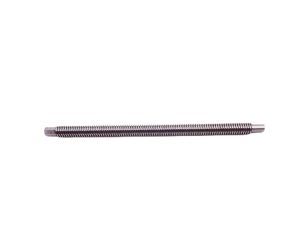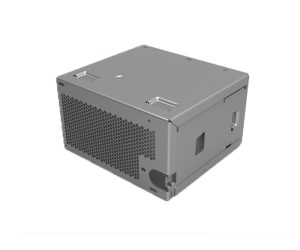Plastic drive gears are rapidly becoming an integral part of modern gear systems, providing a wide range of benefits that enhance the efficiency, reliability, and cost-effectiveness of various industries. From automotive to robotics, medical devices, and industrial machinery, plastic gears offer lightweight, durable, and performance-optimized solutions that cater to the demanding needs of contemporary gear systems. In this article, we’ll dive deep into the advantages of plastic drive gears and explore their diverse applications, showcasing how they’ve revolutionized industries worldwide.
1. Introduction
Plastic drive gears are engineered components used in gear systems to transmit power and motion between rotating shafts. Made from materials like nylon, acetal, and polyethylene, plastic gears provide several distinct advantages over traditional metal gears. These benefits include reduced weight, lower production costs, superior corrosion resistance, and quieter operation. As industries continue to demand more efficient and cost-effective solutions, plastic gears are poised to play a key role in enhancing performance across various fields.
Plastic gears are essential in a wide variety of applications where lightweight, precision, and long-term durability are critical. In industries such as automotive, robotics, medical devices, and consumer electronics, the versatility and advantages of plastic drive gears are driving innovation, improving system efficiency, and reducing maintenance costs. Let’s dive into the details of these remarkable components.
2. Understanding Plastic Drive Gears
2.1 What Are Plastic Gears?
Plastic gears are mechanical components made from engineering plastics that work in conjunction with other gears to transmit power and motion. These gears consist of teeth that mesh with corresponding teeth on another gear, enabling controlled movement. Plastic gears are typically manufactured from materials like nylon, acetal (POM), polypropylene, or polyethylene, each chosen for its unique set of properties.
What sets plastic gears apart from traditional metal gears is their lower weight, self-lubricating properties, and resistance to corrosion. These factors make plastic gears especially suitable for environments where metal gears would otherwise corrode, become too heavy, or require constant lubrication. Plastic gears are used in a variety of types, including spur, helical, bevel, worm, and rack and pinion gears.
2.2 The Role of Plastic Drive Gears
Plastic drive gears are critical in systems where power and motion need to be transmitted with precision and reliability. The lightweight nature of plastic gears reduces the energy required to operate them, which can lead to improvements in energy efficiency. These gears are also preferred in noise-sensitive applications because they generally generate less noise than their metal counterparts. Additionally, plastic gears are highly resistant to wear and fatigue, extending the lifespan of the gear system.
Plastic gears can be found in various industries, such as automotive transmissions, robotics (in robotic arms and joints), consumer electronics (e.g., in motors and controllers), medical devices (e.g., in infusion pumps and ventilators), and industrial machinery (e.g., in conveyors and automated assembly lines).
3. Advantages of Plastic Drive Gears
3.1 Performance Benefits of Plastic Gears
Plastic gears offer several notable performance advantages, including:
- Lightweight Construction: The reduced weight of plastic gears minimizes the rotational inertia, leading to faster acceleration, quicker response times, and energy savings. This makes them ideal for applications where quick movements and energy efficiency are essential.
- Lower Noise Levels: Plastic materials, especially those with self-lubricating properties, generate less noise compared to metal gears, making them ideal for applications where noise reduction is critical (e.g., home appliances, office equipment, or medical devices).
- Self-Lubrication: Many plastics used for gears, like nylon and acetal, have inherent lubrication properties, reducing the need for external lubrication. This leads to less friction between gear teeth and a smoother operation.
- Durability and Wear Resistance: Plastic gears are more resistant to corrosion and wear, especially in environments exposed to moisture or harsh chemicals. Their non-corrosive nature makes them perfect for applications where metal gears would quickly degrade.
- Dimensional Stability: Plastic gears retain their shape and size over time, ensuring accurate gear meshing and consistent performance.
3.2 Reliability and Cost-Effectiveness
Plastic gears are well-known for their reliability and cost-effectiveness, especially in high-volume manufacturing. They require less maintenance than metal gears, thanks to their self-lubricating properties, and are less prone to corrosion. These factors make plastic gears highly durable and reliable, especially in demanding environments where longevity is essential.
In addition to their performance benefits, plastic gears are generally more affordable to produce than their metal counterparts. Their lower manufacturing costs, combined with a longer service life and reduced need for lubrication, make them an excellent choice for industries seeking to minimize expenses without sacrificing performance. Moreover, plastic gears can be customized to meet the specific needs of an application, including features like non-magnetic properties, transparency, or enhanced chemical resistance.
4. Types of Plastic Gears
Plastic gears come in various configurations, each suited for different applications. Some of the most common types include:
4.1 Spur Gears
Spur gears are the most commonly used type of plastic gear. They feature straight teeth that are parallel to the gear's axis. Spur gears are ideal for applications requiring high torque, efficiency, and low noise. They are simple in design and are often used for transmitting power between parallel shafts.
4.2 Helical Gears
Helical gears have teeth that are angled relative to the axis of rotation. This angled design allows for smoother engagement between gears and reduces noise, making helical gears quieter than spur gears. They are also capable of transmitting more torque and are often used in applications requiring higher efficiency and load capacity.
4.3 Bevel Gears
Bevel gears are used to transmit motion between shafts that intersect at an angle. These gears have conically shaped teeth and are commonly used in applications where the direction of motion needs to be changed (e.g., in vehicle differentials and machinery with shifting mechanisms).
4.4 Worm Gears
Worm gears consist of a cylindrical gear (worm) with helical teeth that mesh with a toothed wheel (worm wheel). These gears provide high reduction ratios and are often used in applications requiring precise motion control, such as conveyor systems and lifts. Worm gears can also be self-locking, making them ideal for systems where backdriving is undesirable.
4.5 Rack and Pinion Gears
Rack and pinion gears are used to convert rotary motion into linear motion. The pinion is a small gear that meshes with a linear gear (the rack). These gears are used in applications such as steering systems, linear actuators, and CNC machines, where precise linear movement is required.
5. Applications of Plastic Drive Gears
Plastic drive gears have found applications in many industries, driven by their efficiency, reliability, and cost-effectiveness. Some key sectors include:
- Automotive: Plastic gears are used in automotive transmissions, steering mechanisms, window regulators, and other parts that benefit from lightweight, durable, and cost-effective gears. Plastic gears reduce the weight of the vehicle, improve energy efficiency, and reduce noise.
- Robotics: In robotics, plastic gears provide precise motion control and are often used in robotic arms, joints, and actuators. Their lightweight design allows robots to operate with greater efficiency and flexibility, especially in small-scale or lightweight applications.
- Medical Devices: Plastic gears are used in medical devices such as infusion pumps, ventilators, and prosthetic devices, where precision, quiet operation, and durability are crucial. The non-corrosive properties of plastic gears are essential in maintaining the sterility and longevity of medical equipment.
- Consumer Electronics: Plastic gears are commonly found in motors, controllers, printers, and other consumer electronics. Their quiet operation and reduced weight make them ideal for devices that require smooth and energy-efficient motion, such as cameras, video players, and household appliances.
- Industrial Machinery: Plastic gears are used in automated machinery, conveyors, and production lines. Their corrosion resistance and ability to handle varying loads and speeds make them ideal for use in harsh industrial environments.
6. Conclusion
Plastic drive gears have unlocked new possibilities for gear systems across a broad spectrum of industries. Their lightweight construction, combined with excellent performance characteristics such as self-lubrication, noise reduction, and corrosion resistance, make them a superior choice for applications where reliability, efficiency, and cost-effectiveness are essential.
From automotive transmissions and robotics to medical devices and consumer electronics, plastic gears are driving innovation and improving the performance of systems worldwide. As industries continue to prioritize sustainability and cost reduction, plastic gears will play an increasingly important role in the development of advanced technologies.
By harnessing the advantages of plastic drive gears, companies can improve the efficiency, reliability, and longevity of their gear systems, ultimately leading to more sustainable and cost-effective solutions across various sectors.
7. FAQs
7.1 Are plastic gears as strong as metal gears?
While plastic gears generally have lower mechanical strength compared to metal gears, they offer other important advantages like reduced weight, lower noise, and corrosion resistance. In many applications, their strength is sufficient for the required tasks, and they provide additional benefits that make them a more suitable option than metal gears.
7.2 What are the best materials for plastic gears?
Common materials used for plastic gears include nylon, acetal (POM), polypropylene, and polyethylene. Each material offers unique benefits like self-lubrication, high chemical resistance, or dimensional stability, and the choice of material depends on the specific application.
7.3 Can plastic gears be used in high-temperature environments?
While some plastics have good thermal stability, most plastic gears are not suitable for extremely high temperatures. However, materials like PPS (polyphenylene sulfide) or PEEK (polyether ether ketone) are designed for higher temperature applications. For typical applications, though, plastic gears can operate efficiently within a moderate temperature range.
7.4 What are the main applications of plastic gears?
Plastic gears are widely used in automotive systems, robotics, medical devices, consumer electronics, and industrial machinery. They are especially valued in applications requiring lightweight, quiet, and durable gears that can handle moderate loads.
